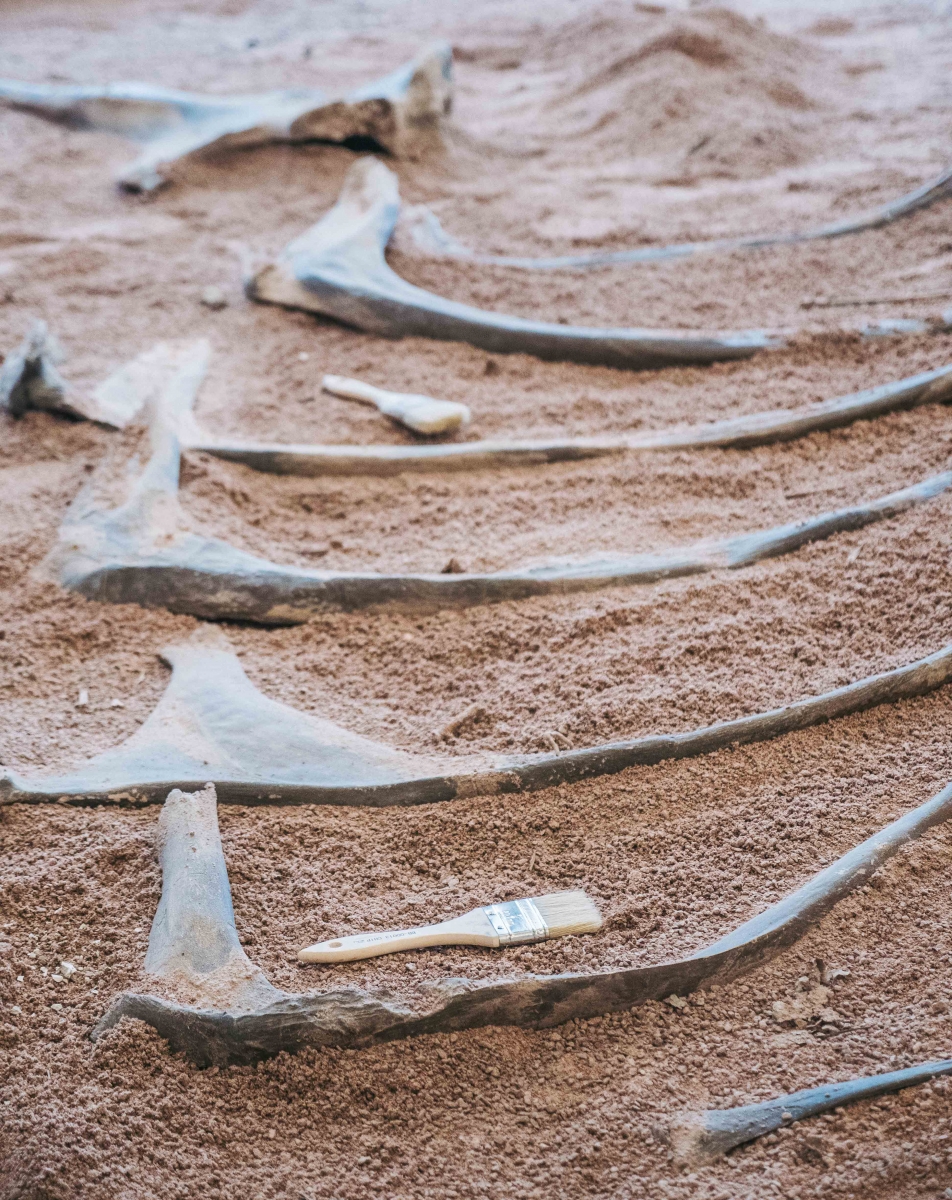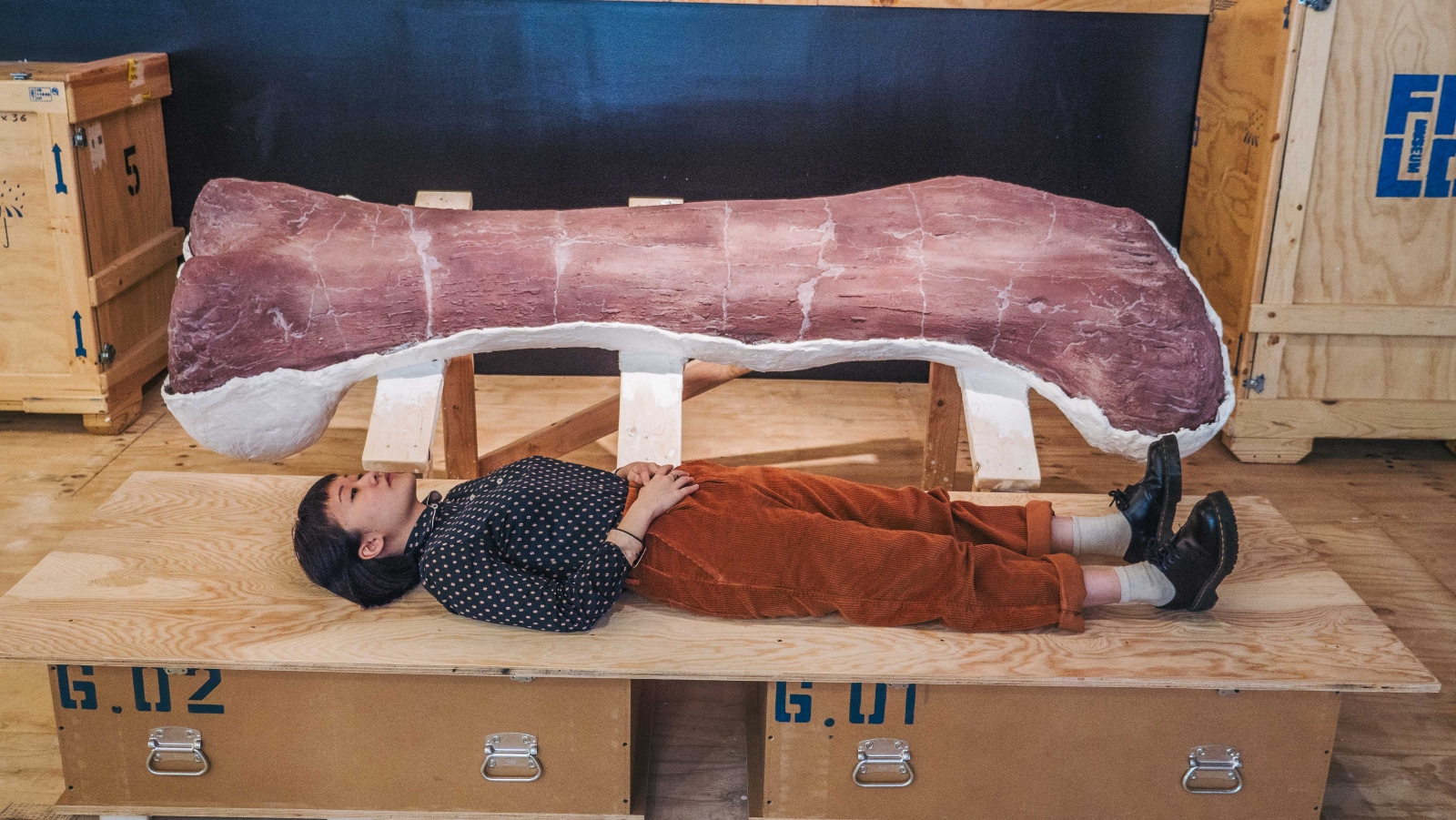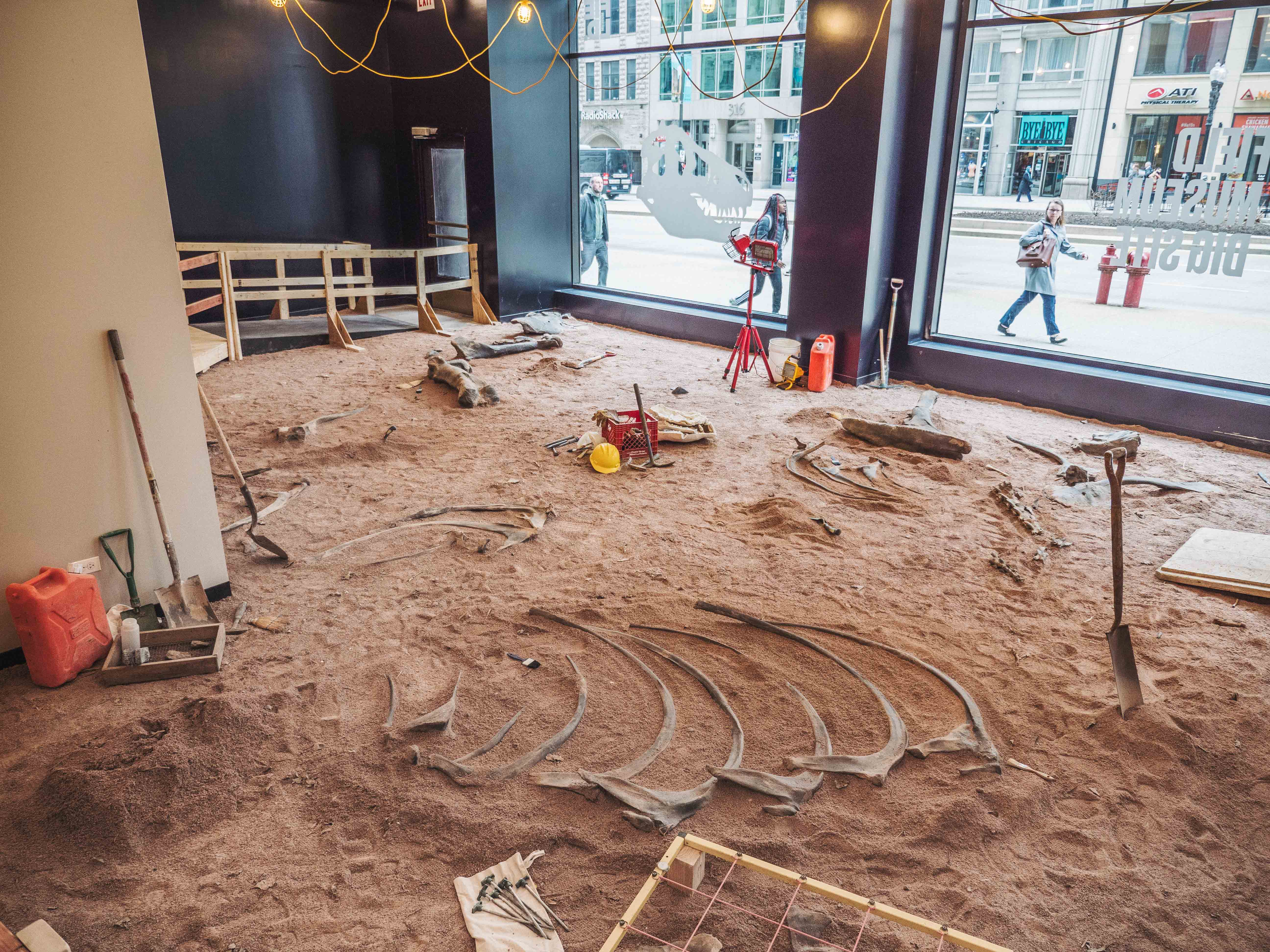If you’ve always hankered to visit an active dig site, you're in luck — well, sort of.
Earlier this month, the Field Museum entered the pop-up game, opening an installation in the Loop that replicates an in-progress dinosaur excavation. Through June 30, a storefront at 333. N. Michigan Avenue will host the dirt-filled pit, where casts of real bones lie amid shovels, brushes, and other equipment.
Those bones represent SUE the T. Rex (you know the one), and the storefront their final resting place in present-day Faith, South Dakota.
“You’re not going to find dinosaur bones in Illinois, but the mentality was, if we can’t bring all of Chicago to a dig site in South Dakota, let’s bring South Dakota to the heart of Chicago,” says Angelica Lasala, a spokesperson for the museum. “Kids, especially, are super excited about this, and maybe it will inspire them to be scientists.”

In contrast to the Field’s admission prices, which range from $17 to $24, this pop-up is free. But it may leave you wanting to visit the real stuff at Museum Campus — perhaps the real mission of this three-month project.
Looking at scattered fragments of ribs and vertebrae certainly gives context for how artifacts are uncovered, but the experience requires some imagination. The dig site is roped off to spectators, so you won’t see any scientists digging around in the dirt, nor will you get a chance to roll up your sleeves yourself.
In fact, the pop-up's biggest draw might be a replicated thigh bone of the Patagotitan mayorum, a.k.a the world’s largest dinosaur, a.k.a Máximo the Titanosaur, who is currently on display in the Field's main hall. Visitors can lie down next to the eight-foot-long femur for reference on the ‘gram.

There are other opportunities to learn. Plaques give a brief overview of what an excavation site is like (it’s messy; sometimes a jackhammer is deployed), and, on weekends, volunteers will wheel in real dino specimens from the museum (this is the time to bring kids). Most engaging are videos that offer glimpses of behind-the-scenes action at the Field, such as scientists CT scanning a mummy.
As Lasala points out, museum visitors see less than one percent of the Field’s collection; the rest is used in active research behind closed doors. Given the inherent constraints of exhibitions, a pop-up like this is one example of how cultural institutions can be more transparent about their practices, whether in the lab or in the field.
“We want to show folks that the Field isn’t a static place full of dead stuff,” says Lasala. “Beyond the museum walls, scientists are doing work like this every day all around the world. We’re an active research museum that happens to have a showroom in the heart of the Museum Campus.”
Too bad any illusion of paleontologists at work here is quickly dashed by the time you do a full loop of the pit, as a mini gift shop awaits you at its end. Given the pop-up’s location, though, you can’t fault the museum for seizing the opportunity to make some extra cash.




